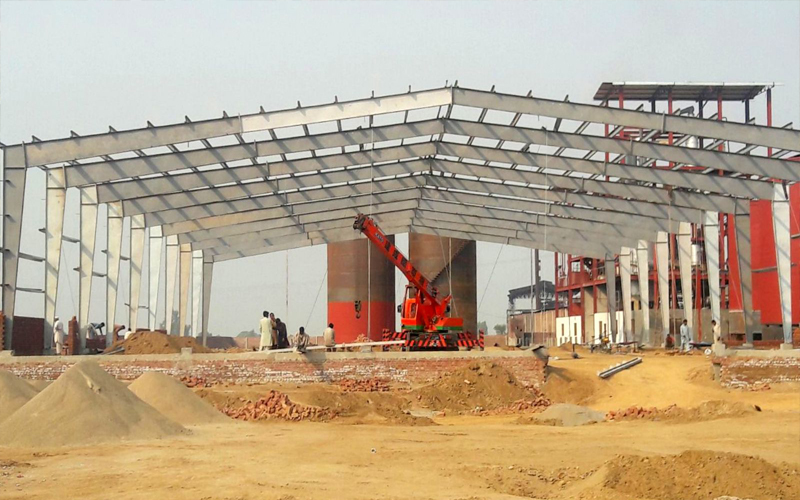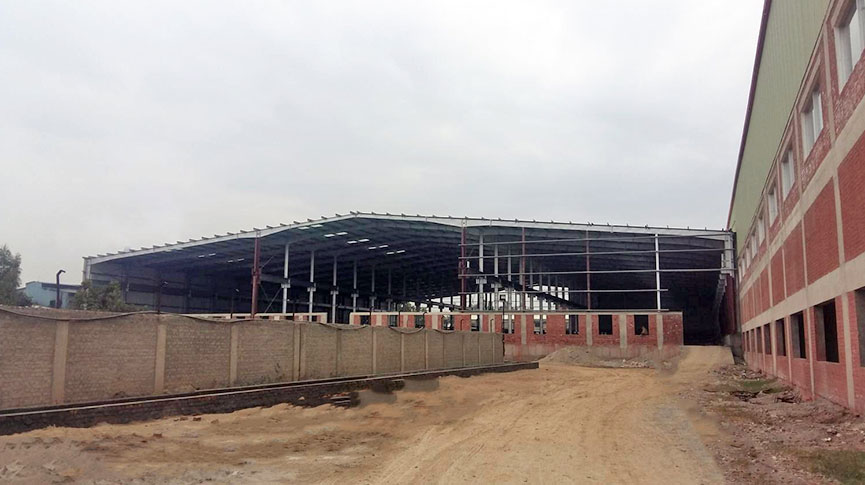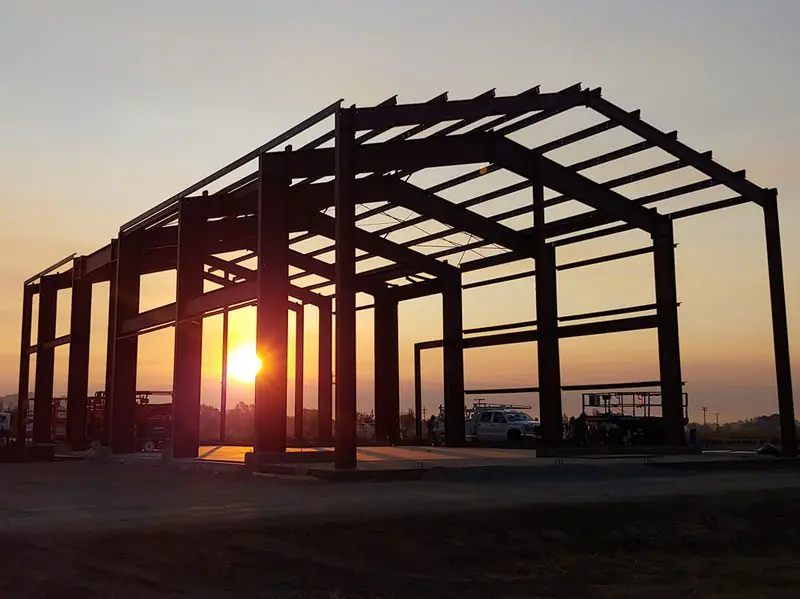Complete Guide to Steel Structure Welding: Techniques and Tips
Learn the best steel structure welding techniques to ensure the strength and durability of your steel buildings. Find the comprehensive guide here!
Steel structure welding is a crucial process in modern building construction. This technique requires special skills and a deep understanding of the properties of steel materials and the correct welding methods.
In this article, we will comprehensively discuss steel structure welding, covering the various welding processes used in steel structure fabrication and important considerations for optimal results.
Whether you are a construction professional or a project owner, understanding steel structure welding will help you ensure the quality and safety of your steel buildings.
1. Steel Structure Welding: A Comprehensive Guide
Steel structure welding is a vital technique in the modern construction industry. This process involves joining steel components using heat and pressure to create strong and durable bonds. Expertise in steel structure welding is essential to ensure the structural integrity of steel buildings.
In steel construction, welding is used to connect various elements such as beams, columns, and plates. This technique allows for the construction of taller, stronger, and more flexible structures compared to traditional methods. Welding also enables more complex and aesthetic designs.
The steel structure welding process involves several important stages:
- Material Preparation: The steel must be cleaned of dirt, rust, and oil to ensure good weld quality.
- Electrode Selection: The appropriate electrode is chosen based on the type of steel and the welding method used.
- Parameter Settings: Electrical current, voltage, and welding speed are set for optimal results.
- Welding Process: The welder performs welding according to the applicable specifications and standards.
- Inspection and Testing: The welds are inspected visually and through non-destructive methods to ensure their quality.
Safety is a crucial aspect of steel structure welding. Workers must use personal protective equipment (PPE) such as welding helmets, gloves, and fire-resistant clothing. Good ventilation is also needed to avoid welding fume hazards.
Technological advancements have brought innovations in steel welding. Methods such as robotic welding and laser use are increasingly popular because they can enhance precision and efficiency. However, human expertise remains irreplaceable, especially for complex projects requiring quick assessment and adaptation.
A deep understanding of steel metallurgy is also important in steel structure welding. Knowledge of the properties of steel, including melting points, thermal conductivity, and behavior during heating and cooling, helps welders produce strong, defect-free joints.

2. Types of Welding Processes Used in Steel Structure Fabrication
Various welding processes are used in steel building fabrication, depending on the project specifications, type of steel, and field conditions. Here are some common welding methods used in steel structure welding:
- Shielded Metal Arc Welding (SMAW): Also known as stick welding, SMAW is the most frequently used method in steel construction. This process uses a coated electrode that melts and forms the weld joint. SMAW is suitable for various welding positions and can be used outdoors, making it ideal for fieldwork.
- Gas Metal Arc Welding (GMAW): GMAW, or MIG welding, uses a continuous welding wire fed through a welding torch. This process is faster than SMAW and produces clean welds with minimal slag. GMAW is often used in workshop fabrication due to its speed and consistent weld quality.
- Flux-Cored Arc Welding (FCAW): Similar to GMAW, FCAW uses a hollow welding wire filled with flux. This method is suitable for outdoor welding and can handle rusty or dirty surfaces. FCAW is popular in steel construction due to its high productivity.
- Submerged Arc Welding (SAW): SAW is an automatic process that uses flux grains to protect the weld pool. This method produces high-quality welds with deep penetration and is suitable for welding thick steel components. SAW is often used in fabricating steel beams and large columns.
- Gas Tungsten Arc Welding (GTAW): Also known as TIG welding, GTAW uses a non-consumable tungsten electrode and separate shielding gas. This process produces high-quality welds and is often used for welding stainless steel or when aesthetics are crucial.
- Electroslag Welding (ESW): ESW is a specialized process used to join very thick vertical steel plates. This method uses conductive slag heated to melt the base metal and filler.
- Electron Beam Welding (EBW): EBW uses a high-energy electron beam to melt and fuse the metal. This process produces very narrow and deep welds, ideal for high-precision steel components.
- Laser Beam Welding (LBW): LBW uses a concentrated laser beam to melt the metal. This method produces high-speed welds with minimal distortion, suitable for fabricating thin steel components.
The choice of welding method depends on several factors:
- Steel material thickness
- Type of joint (butt, lap, T-joint, etc.)
- Welding position (flat, vertical, overhead)
- Desired mechanical properties
- Productivity and cost efficiency
- Quality and construction standards requirements
Many steel construction projects use a combination of various welding methods to achieve optimal results. For example, GMAW might be used for workshop fabrication, while SMAW is used for fieldwork.
Technological advancements continue to bring innovations in steel structure welding techniques. Methods like hybrid welding, which combines laser with arc welding, are becoming more popular because they can increase speed and weld quality.
A deep understanding of these various welding processes allows engineers and contractors to choose the best method for each application, ensuring strength, durability, and optimal efficiency in steel building construction.

3. Important Considerations for Steel Structure Welding
When performing steel structure welding, several crucial considerations must be addressed to ensure weld quality and safety:
- Material Selection: Understanding the chemical composition and mechanical properties of steel is vital. High-carbon steel requires special treatment to prevent cracking. Electrode and filler metal selection must be compatible with the base steel.
- Joint Design: Proper joint design affects the strength and performance of the structure. Consider factors like welding access, stress distribution, and potential distortion.
- Surface Preparation: The steel surface must be free from rust, paint, oil, and other contaminants. Proper preparation improves weld quality and reduces defect risks.
- Distortion Control: Heating and cooling during welding can cause distortion. Techniques like sequential welding and using jigs can minimize this issue.
- Inspection and Testing: Visual inspections and non-destructive methods like ultrasonic testing and radiography are important to ensure weld integrity.
- Welder Qualification: Welders must have appropriate certification and experience. Operator skills greatly impact the final quality.
- Environmental Conditions: Factors like wind, humidity, and temperature can affect weld quality. Proper protection is needed when working outdoors.
- Safety: Using appropriate PPE and strict adherence to safety procedures are crucial in steel structure welding.
By addressing these factors, we can ensure that steel structure welding is performed to the highest standards, resulting in safe and durable buildings.

4. Conclusion
Steel structure welding is a fundamental aspect of modern construction. This technique enables the construction of taller, stronger, and more flexible structures. From various welding methods to important considerations in the process, steel structure welding requires expertise and in-depth knowledge.
Choosing the right welding method, such as SMAW, GMAW, or FCAW, is crucial and depends on project specifications. Each method has advantages and specific applications in steel building fabrication.
Considerations like material selection, joint design, and distortion control are crucial for optimal results. Equally important are safety aspects and welder qualifications.
Technological advancements continue to bring innovations in this field, but human expertise remains irreplaceable. A deep understanding of steel structure welding principles enables professionals to create buildings that are not only aesthetic but also safe and durable.
By continuously improving knowledge and skills in steel structure welding, the construction industry can keep pushing the boundaries in architecture and civil engineering, creating impressive and functional structures for future generations.

Post Comment